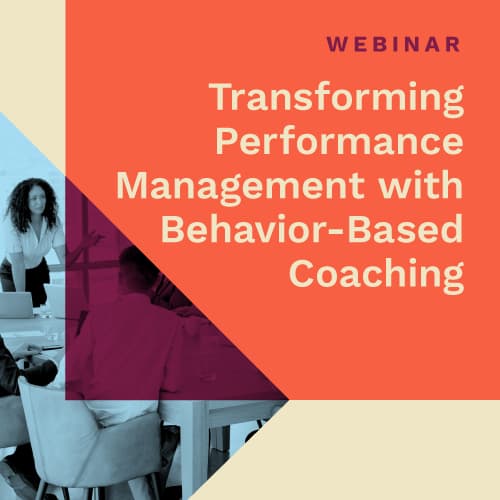To best prepare your organization for the future, a leadership pipeline is crucial to success—starting at the very beginning of your talent pool. What is a leadership pipeline, though?
Four Elements of a Leadership Pipeline
A leadership pipeline is the process of preparing your organization for the future. Leaders come and go, so it is important to have a strategy to fill key, vacant positions. Leadership pipelines can also help identify high-potentials within an organization and create their development pathway. This model is designed to help individuals grow and strategically fill future leadership positions.
A great way to create a leadership pipeline is to marry succession planning with leadership development. Typically, succession planning focuses on the executive, C-Suite positions, and leadership development focuses on middle management. But by marrying the two with an added focus on your individual contributors, you will be able to identify and develop them into future leaders.
Keep in mind that your leadership development should not just be targeted towards your middle management. The goal of your leadership development program should be to provide high-potentials with the skills needed for each building block of leadership. Be sure to teach traditional leadership attributes with a focus on new competencies, such as how to think strategically and what it means to motivate others.
Below are four essential elements of the leadership pipeline that address broad performance levels within the organization:
1. Individual Contributors. Does your company develop its individual contributors, such as those with titles including "specialist" or "coordinator"? It is important to begin your pipeline strategy with your staff-level, tactical employees. These individuals are the specialists focused specifically in their area of expertise and do not have any formal management responsibilities. It's crucial that they are groomed with EQ and people skills early on in their career, to both get noticed by upper management and be ready for their first step into management.
2. Managers. The second part of the pipeline targets managers and line-level leaders.This transition from individual contributor to manager requires a significant shift in mindset and skill, moving the focus from "me" to "we". Therefore, teaching individuals how to get results through others is a key lesson at this stage. Additionally, knowing how to motivate, support, and effectively communicate with employees is crucial to team success and to building key relationships for new managers.
3. Mid-Level Management. Those who lead multiple teams or departments are the third focus in the pipeline. It's essential they learn how to be effective at solving business challenges and leading other managers. At this stage in one's career, individuals need to be prepared for the push and pull between being both a strategic leader and a tactical manager. Create an influence cross-functionally and across departments is key to success at this level.
4. Executive Leaders. The final stage in the leadership pipeline is the C-Suite: strategic leadership. Often, these succession plans are prepared years in advance for this level of the pipeline. Knowing who has the capabilities and core values to carry the company's vision forward can be both a very challenging, yet critical, piece of your organization's future success.
The Benefits to Your Organization
How does a leadership pipeline help your organization? Well, it helps top-level executives and your HR department identify employees that have leadership potential. By investing in and showing you care about your individual contributors, you will retain your high-potential talent, ensure future readiness of the front lines of your organization, and attract top talent because you've created a path for growth and development. According to Deloitte's research, 35% of Millennials would search for a new job if their current organization lacked learning and development opportunities.
Deloitte's research also states that only 6% of respondents strongly believe their managers effectively lead a multi-generational workforce. Ensure you are building high-potentials with the skills they need to be effective leaders. Disruption happens often, the future is unknown, and there will always be personality differences, especially in a leadership role. It’s crucial for leaders to understand this and know how to handle the different situations effectively. Ultimately, your organization is in your leaders’ hands and they are the ones to strengthen performance.
Make Individual Contributors Your New Priority
This is very important, so that's why I'm repeating it. Start the leadership pipeline with your individual contributors.
Don't start developing leaders when they are already in executive positions. It's essential to develop a leadership mindset at the beginning of a career, rather than in the middle or near the end of a career. In doing so, you are empowering your employees to proactively identify challenges, understand norms and differences, and provide opportunities for growth. But most importantly, you are providing them with new ways of thinking or approaching issues, building greater awareness, and helping them learn the skills needed to be accountable.
Do your employees know how to effectively respond in tough situations? Are they aware of how to best interact with others under stress? Are they accountable for their actions? Do they adapt to changing circumstances? If not, incorporate these learnings into your employee development program.
Your organizational performance depends on having the right leaders in the right roles and setting your future leaders up for success. So, why not start now?
We provide the self-coaching tools to your individual contributors to build greater confidence, resilience, and accountability. And by doing so, you're getting them ready for your succession plan. Let’s connect.

